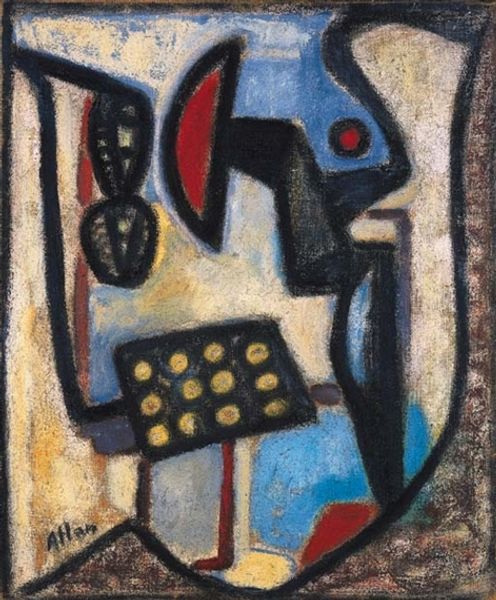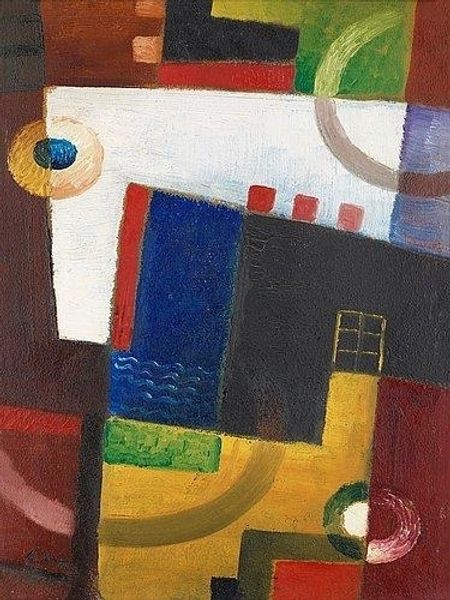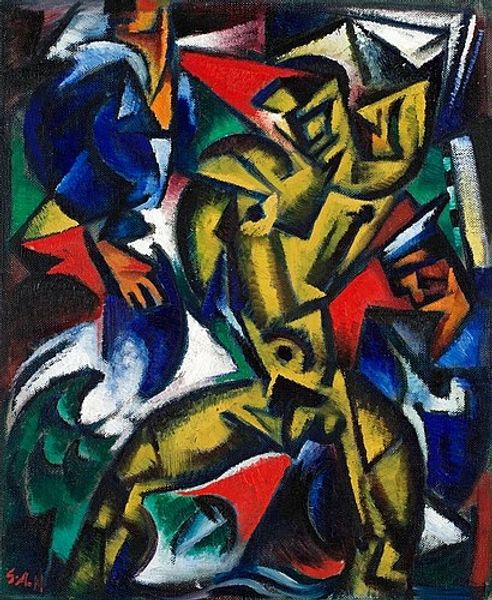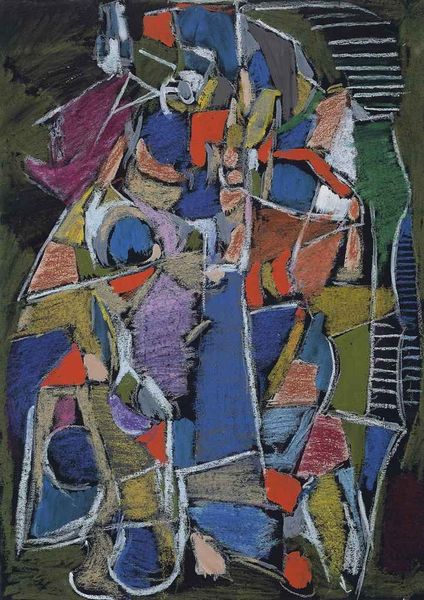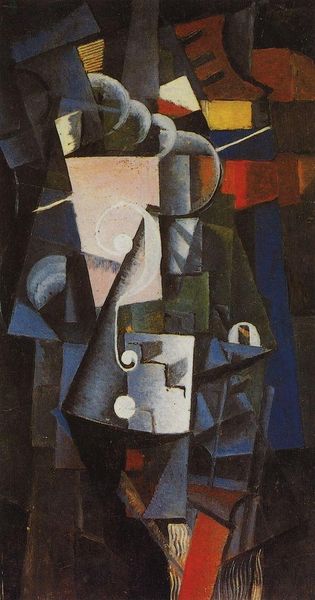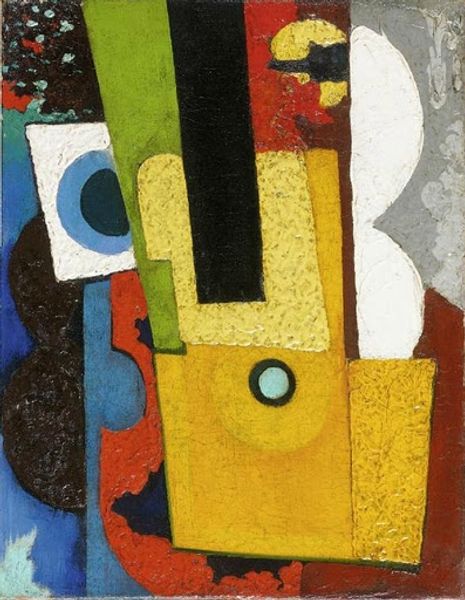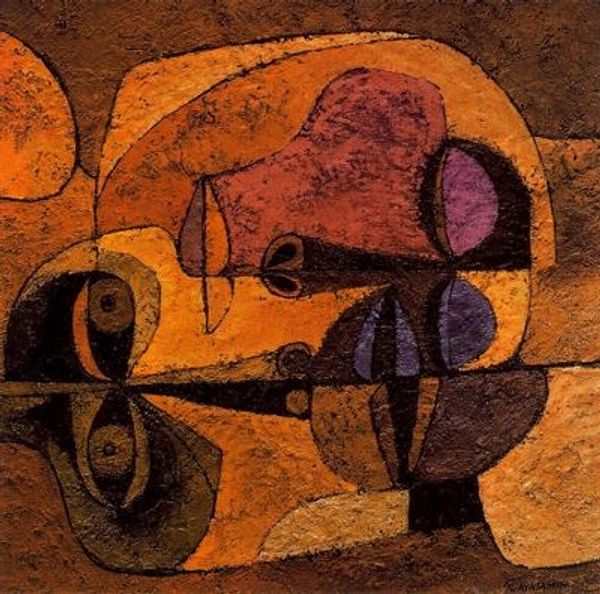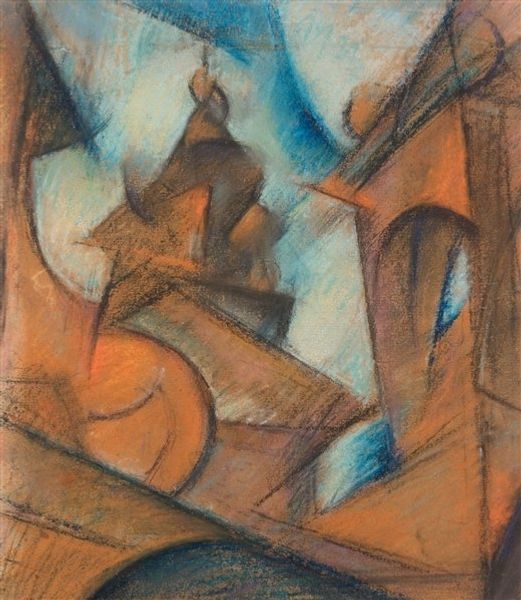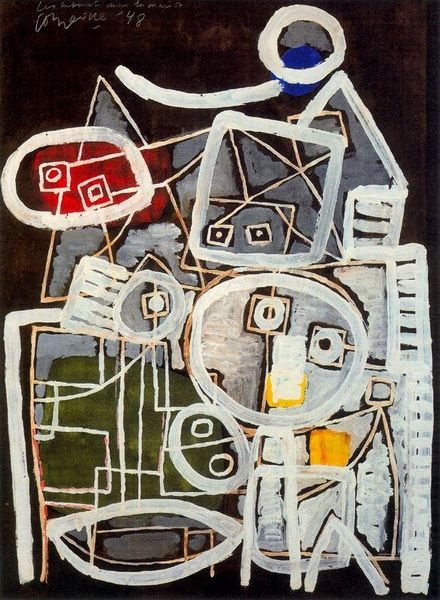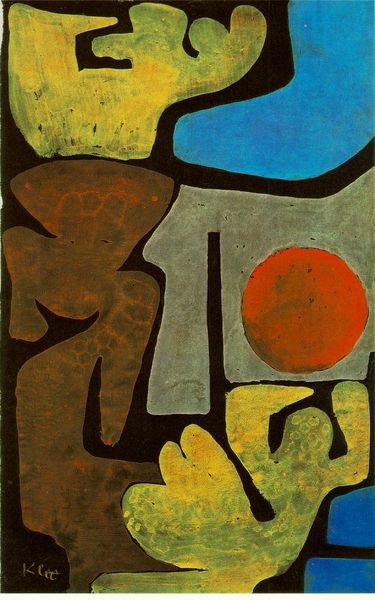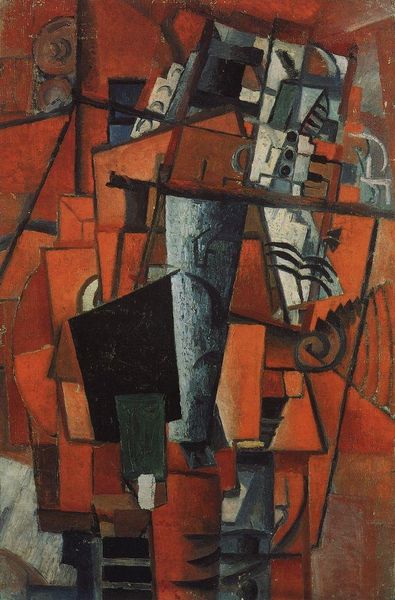
painting
#
cubism
#
abstract painting
#
painting
#
geometric
#
modernism
Copyright: Public domain US
Curator: Looking at Gösta Adrian-Nilsson's "Mekanik - Sandskopa," created in 1922, what's your initial take? Editor: It’s surprisingly tactile, even just seeing it. The way the paint’s applied gives real texture, almost industrial, doesn’t it? Like rough cast iron. Curator: Absolutely. Adrian-Nilsson, often abbreviated GAN, was deeply interested in the machine age, modernism, and particularly in creating a queer aesthetic within that context. This piece reflects that intersection. Editor: The title "Sandskopa"—Sand Scoop—is interesting given that, because I initially perceived this through its form and material properties as entirely decontextualized from any labor narrative. The roughness of the paint and its muted color palette gives it a raw feel that seems so at odds with the delicate process of sand scooping. It speaks more about labor’s materiality. Curator: Precisely, it shows the tensions inherent in that period’s embrace of industrial progress alongside a fascination with traditional labor, filtered, as I said, through a specifically queer lens. You see it in the hard-edged geometry mixed with these soft, almost luminous colors. There’s a clear push and pull. Editor: How was something like this received back then? Given its obvious departures from any conventional representational imagery. Curator: Early reactions were mixed, as you might imagine. Sweden, at that time, had an interesting dynamic. While modernism was gaining traction, there was still a strong academic tradition. Works like this challenged those established norms and provoked critical debate about the role and function of art in society. Editor: I wonder how the "queer aesthetic" you mentioned plays out, especially regarding materiality and consumption. How the artist manipulated the traditional definitions. The tension between these two points feels very central here, challenging preconceived categories. Curator: It certainly does. By disrupting conventional forms and representation, GAN offered an alternative vision of modernity, questioning the very structures upon which it was built. Editor: It’s amazing how much historical weight rests on this small canvas, even now. It almost invites us to renegotiate the relationship between art, labor and the queer narrative in our own era. Curator: It does indeed! This little-known artwork challenges the definition of modernity's socio-historical context. It provides a framework that invites modern queer critique of historical artwork.
Comments
No comments
Be the first to comment and join the conversation on the ultimate creative platform.
